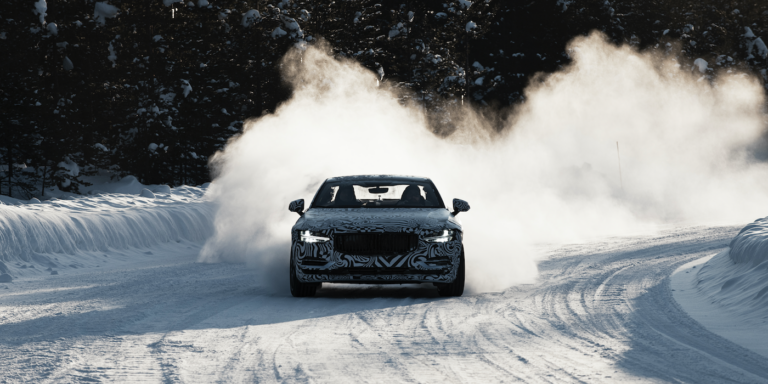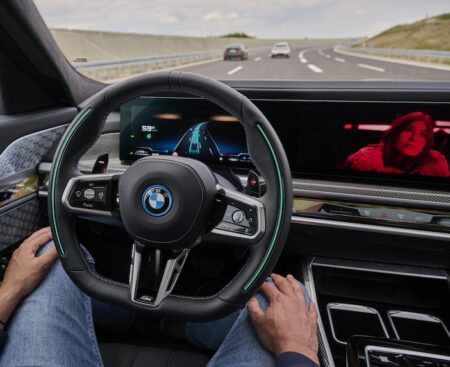The hybrid drivetrain and torque vectoring system on the Polestar 1 has undergone two weeks of testing to ensure high standards of dynamic performance and durability. The tests took place north of the arctic circle using the first running prototype of the car.
The Polestar 1, the first model of Volvo’s recently spun-off performance brand, will feature a 2-liter Volvo gasoline engine driving the front wheels, assisted by two electric motors driving the rear wheels individually through planetary gear sets. This configuration enables real torque vectoring on the rear axle, rather than through brake intervention, as is so often the case on vehicles boasting ‘torque vectoring’.
20 different anti-roll bars were trialed – 10 different thicknesses for each axle – in order to achieve a predictable handling balance.
The icy conditions allowed the test team to truly put the torque vectoring system and chassis set-up through their paces. CEO Thomas Ingenlath said that the test drivers were very optimistic about the chassis balance, commenting that “this is a driver’s car”. Since Volvo’s current offerings – with which the Polestar 1 shares a platform – are decidedly geared towards comfort rather than handling precision and responsiveness, it will be interesting to see whether this promise of a driver’s car will materialize.
In addition to being an excellent place to calibrate chassis settings, the Arctic’s biting cold – as low as -28° – also puts the batteries under scrutiny. As the future Polestar 2 and 3 will pure EVs, this is certainly an important trial run. The Polestar 1 should start production in mid-2019, with the 2 and 3 joining the range later.





